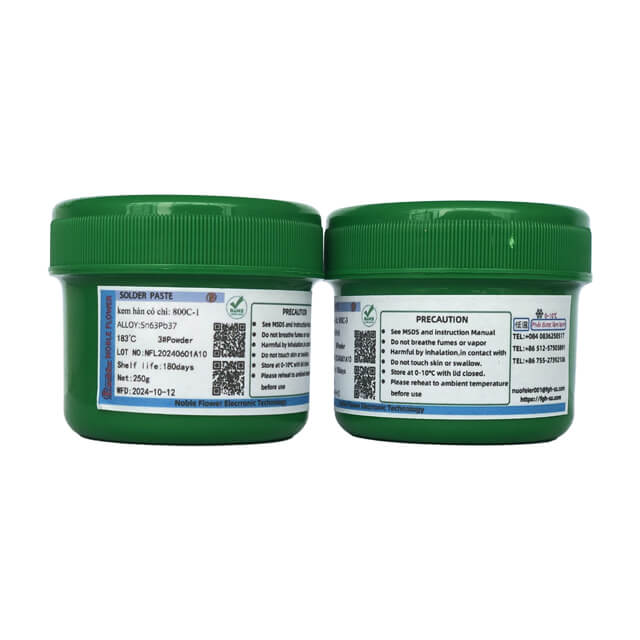Views: 1 创始人: Site Editor Publish Time: 2024-11-05 Origin: Site








As the current mainstream SMT production process, the material
selection of SMT soldering in the production process is very important, and the
selection of solder paste is particularly critical. The right solder paste can
improve product quality, reduce damage, and reduce production costs. Today,
Nofil solder paste manufacturers will take you to understand how to choose
solder paste in the SMT production process.
When choosing solder paste in the SMT
production process, due to the wide variety of solder, we need to choose
according to the needs of our own products, process flow and cleaning methods,
as follows:
1. For electronic products that are not
intended to be cleaned after soldering, no-clean solder paste is preferred.
When sizing, attention should be paid to its compatibility with pre-applied
fluxes and its suitability to the foaming process, as this solder paste has low
residues.
2. If the electronic product needs to be
cleaned after soldering, the solder paste should be selected according to the
cleaning process. For example, if water washing is used, a water-soluble solder
paste can be used for PCB soldering (if an organic ammonia saponifier is used).
3. No matter what type of solder paste is
chosen, you should pay attention to the quality of the solder paste itself and
the adaptability to the welding machine, especially the PCB preheating
temperature, which is the primary condition to ensure the realization of the
function of the solder paste.
4. If you choose VOC no-clean solder paste, you should pay attention to the compatibility with the equipment, such as the corrosion resistance of the equipment, whether the preheating temperature is appropriate (usually requires an appropriate increase), and whether the PCB substrate is adaptable, for example, some substrates have high water absorption and are prone to bubble defects.

The selection of solder paste is only an
important part of the SMT production process, but there are many other aspects
of the SMT production process that need to be carefully controlled. For
example, the placement accuracy of a component has a profound impact on the
quality of the final product. High-precision placement ensures the stability of
the circuit connection and reduces the risk of failure due to poor connection.
In this regard, advanced placement machine equipment and precise programming
settings are the key to achieving high-precision placement.
In addition, the temperature profile
setting of reflow soldering is also a factor that cannot be ignored. Different
types of components and PCBs may require different reflow temperature profiles
to ensure solder quality. A reasonable temperature profile can ensure that the
solder paste melts and solidifies within a suitable time, and avoids problems
such as virtual soldering and overwelding. At the same time, humidity and
temperature control are also important for the production environment, which
can affect the performance of the solder paste and the performance of the
components.
In addition, quality control is also
crucial in the SMT production process. Including visual inspection, electrical
performance testing and other inspection processes, it can find the problems in
the production process in time, and avoid defective products from flowing into
the next process or finally reaching consumers. Through these comprehensive
quality control measures, we can ensure the efficient and stable operation of
the SMT production process and produce high-quality electronic products.
That's all there is to choosing a solder paste for the SMT
production process. For more information about solder, you can search for
"Suzhou Nofer" to view. We will update the information regularly,
welcome to follow, thank you very much.
 苏公网安备32058302004438
苏公网安备32058302004438